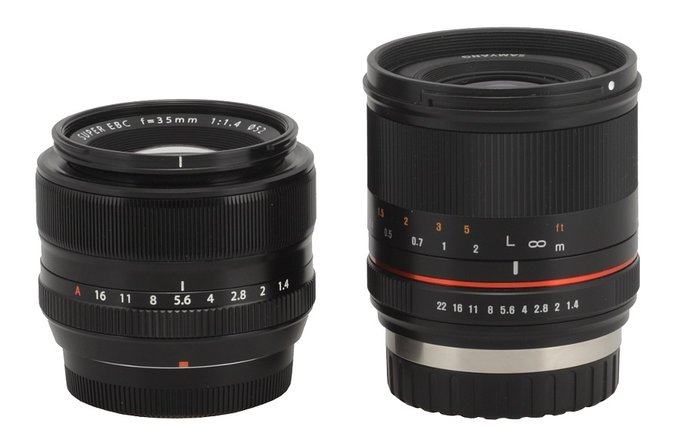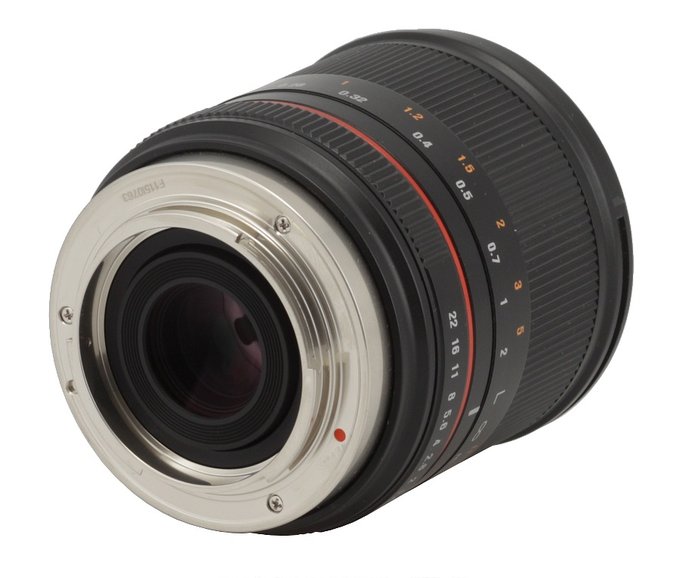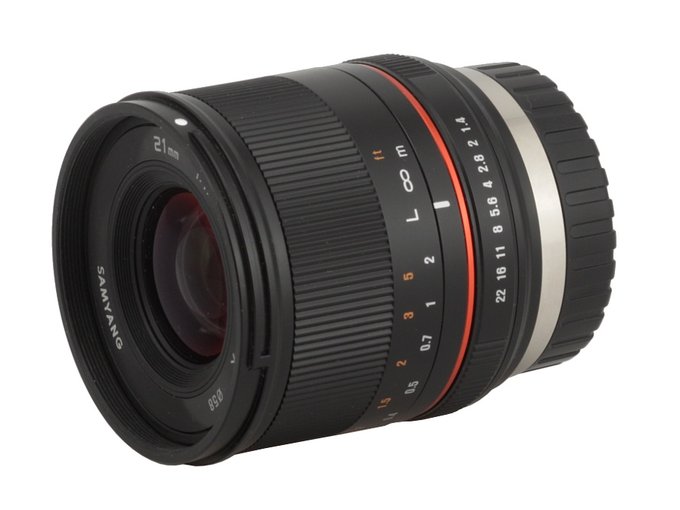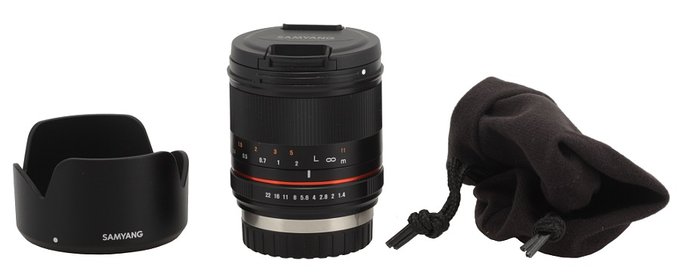Samyang 21 mm f/1.4 ED AS UMC CS
3. Build quality
In the photo below the tested lens is positioned next to another Fujinon, the XF 35 mm f/1.4R.
 |
Please Support UsIf you enjoy our reviews and articles, and you want us to continue our work please, support our website by donating through PayPal. The funds are going to be used for paying our editorial team, renting servers, and equipping our testing studio; only that way we will be able to continue providing you interesting content for free. |
- - - - - - - - - - - - - - - - - - - - - - - - - - - - - - - - - - - - - - - - - - - - - - - -
The Samyang 21 mm f/1.4 ED AS UMC CS starts with a metal mount. Unfortunately the lens is not equipped with contacts so it doesn’t provide any information to the camera body and its aperture cannot be adjusted by using camera’s controls. A rear element, 20 mm in diameter, changes its position during focusing but the movement is very slight. The area close to the element is properly darkened, without any significant slits or places where you can glimpse the interior of the tube. Unfortunately the mount ring flashes metallically not only from the outside but also from the inside. I’d much rather it was darkened too as the flashes might cause problems with work against bright light.
 |
An immobile, metal ring, smooth and silvery, is the first part of the proper body of the lens. Further on you see an aperture ring, as wide as 9 mm. Its work is properly damped down and smooth, allowing you to change the aperture value every 1/2 EV stop.
The next part is a red, metal, immobile ring behind which you can find a manual focus ring, almost 30 mm wide, with a distance scale expressed in meters and feet. Its movements are smooth and it is properly damped down but we wish its resistance was a bit more pronounced. Running through the whole distance scale needs a turn through an angle of about 130 degrees. That value we find slightly too low for a good quality manual instrument. Unfortunately the producer didn’t add any depth of field scale on the barrel – in a case of a manual lens it is a very strange decision and we think it was definitely a mistake…
 |
Behind the focus ring the body of the lens turns into a hood mount. The mount surrounds a non-rotating filter thread, 58 mm in diameter, inside which you see also a part of the barrel with the name and the parameters of the lens. The front element doesn’t move, it is slightly convex, with a diameter of 31 mm.
 |
When it comes to the inner design you deal here with 8 elements positioned in 7 groups. Among them you can find as many as three aspherical elements and one element made of low dispersion ED glass.
Buyers get both caps, a hood and a soft pouch in the box.
 |






